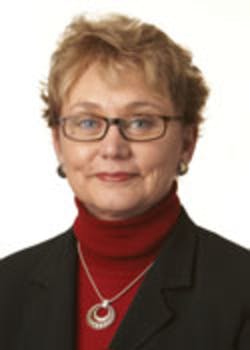Utilizing predictive modeling with homebound patient populations can help prevent ED visits and admissions.
Hospital inpatient stays and emergency room costs are the largest determinants in the total cost of care for the top five diagnoses in home care: congestive heart failure, diabetes, wound-related diagnoses, cancer, and respiratory diagnoses, including chronic obstructive pulmonary disease or COPD.
Utilizing predictive modeling with homebound patient populations can help prevent ED visits and admissions.
Hospital inpatient stays and emergency room costs are the largest determinants in the total cost of care for the top five diagnoses in home care: congestive heart failure, diabetes, wound-related diagnoses, cancer, and respiratory diagnoses, including chronic obstructive pulmonary disease or COPD.
Medicare — the major payer for home health — believes that providers should be able to manage resources and successfully avoid homebound patient hospitalization or emergency department (ED) use due to uncontrolled diabetes, falling injuries at home, wound infection or improper medication administration. Since 2005, however, home health agencies have not demonstrated significant progress in impacting these outcomes.
Progressive increases in the cost of home health Medicare benefits, concerns about fraud and abuse, and demands for home health provider accountability prompted the Centers for Medicare & Medicaid Services (CMS) to devise a data collection/reporting routine to evaluate home health as an appropriate, necessary and effective means of care.
According to CMS, the Outcome and Assessment Information Set (OASIS) is a group of data elements that represent core items of a comprehensive assessment for an adult home care patient, and forms the basis for measuring patient outcomes for purposes of outcome-based quality improvement (OBQI).
OASIS is a key component of Medicare’s partnership with the home care industry to foster and monitor improved home healthcare outcomes and is proposed to be an integral part of the revised Conditions of Participation for Medicare-certified home health agencies (HHAs). The use of technology and OASIS has facilitated the creation of opportunities for home-care providers to better meet their patients’ and Medicare’s expectations.
In the mid-1990s, the OASIS data set was tested and refined. Mandatory reporting of clinical and financial data was implemented in 1999. In 2002, studies validated the statistical reliability of the tool.
OASIS and Predictive Modeling
OASIS systematically measures patient home healthcare outcomes with very specific definitions; they measure changes in a patient’s health status between two or more time points.
OASIS data is collected at various times during the course of a patient’s home health treatment. At a minimum, the data is collected upon admission and discharge from home health. Medicare uses the data to compare a patient’s clinical and functional status from admission to discharge. Each agency’s success in achieving positive outcomes on designated OASIS measurements are compared to the agency’s previous performance and to that of other agencies.
There are more than 60 million records in the CMS OASIS data warehouse generated from more than two decades of home health data submissions. It is this database that holds the key to predictive modeling and decision support for improvements in the outcomes of home health patients.
Predictive modeling holds great promise because OASIS data can be mined to identify important patterns and relationships between clinical observations and patient outcomes. Utilizing OASIS patient assessment data at the start of care, home health management information systems and mobile point-of-care technology solutions for home health clinicians apply mathematical algorithms to immediately identify patients who are at risk for unplanned rehospitalization or emergent care.
A complete predictive modeling system encompasses benchmarking, ongoing bio-surveillance, workflow alerts, clinical protocols, and finally, an outcomes feedback loop. Technology-enabled logic analysis via predictive modeling enables providers to identify best practices, the areas needing improvement and optimal use of both physical and clinical resources without sacrificing quality of care.
Previous research has reported on risk factors associated with acute care hospitalization (ACH) among home health patients. Research is underway to assess whether use of an automated start-of-care predictive modeling tool among home health patients reduces hospitalization rates. Results are preliminary but promising.
Predictive Modeling in Practice
Outcomes related to unplanned hospitalization and emergent care at 15 Florida home health agencies are currently being studied. The studies utilize OASIS data comparisons (pre- and post-implementation) of a predictive modeling tool that assigns risk to patients based on data collected at the start of care. Participating agencies implemented a tool created by OCS Inc. to conduct the analysis between April and June 2007.
Pre-implementation hospitalization rates were calculated based on OASIS data from 13,626 patient cases during the year prior to implementation (April 2006 to March 2007). Post-implementation hospitalization rates were calculated based on OASIS data from 3,631 patient cases during the 3-month period following implementation (July to late-September 2007).
A large control group of 73 Florida agencies was also followed during the same date ranges. The goal was to rule out potential effects of a reduction in hospitalization rates due to more global initiatives within the home care market. An example would be the CMS mandate that quality improvement organizations focus on reducing hospital admissions among home care patients. Data from 116,096 patient cases was used to calculate the hospitalization rate during the pre-implementation date range while data from 11,400 patient cases was used to calculate the rate for the post-implementation date range for the larger Florida control group.
Early results are promising among the Florida home health agencies using the predictive modeling tool. Hospitalization rates showed a significant drop of 2.6 percentage points (a 10.6 percent reduction) from 24.6 percent to 22 percent. A similar, although less robust, single percentage point reduction in hospitalization rate from 24.5 percent to 23.5 percent was seen among all home health agencies in Florida who submitted data but did not use the tool. The research continues and results will be reported again in September 2008.
Using predictive modeling tools to screen for important risk factors is a promising means to further inform and individualize a patient’s plan of care and provide decision support for allocation of expensive resources such as telemonitoring devices, extra nursing visits or case supervision by expensive clinical specialists. Although preliminary research shows potential, continued efforts must be made to identify best practices, associate response to risk and screen findings to patient outcomes.
Predictive Modeling Yields Best Practices
Research is also underway in Pennsylvania. A rural Medicare-certified community home care organization is studying the impact of utilizing an automated predictive modeling tool to identify patients who are at risk for hospitalization. This is being done in combination with standardized nursing interventions intended to reduce their ACH rate. The sample group includes all Medicare-skilled nursing patients and/or therapy-only patients admitted to the agency over a 3-month period.
Prior to the study, historical patient data was analyzed utilizing predictive modeling to identify commonalities among patient characteristics. Primary diagnosis, risk factors for hospitalization, moderate risk level for ACH (as identified by the automated predictive tool) and visit patterns were identified as significant factors leading to patient hospitalization. Additionally, these factors were most significant within the first two weeks of the home-care episode.
Armed with this information, the home-care organization developed standard best practice nursing interventions for patients who are identified with a risk for ACH. A combination of front-loaded visits and supplemental telephone calls are being implemented for those patients identified with a moderate risk for ACH.
The hope for this study, other than the obvious reduction of the ACH rate for the home health organization, is to improve patient care and establish reliable and consistent best practice nursing interventions to keep home-care patients in their homes. For the home-care industry this study, and others of its type, can be industry changing. Gaps between knowledge and practice can be identified through the diligence of these studies, resulting in established standards of care and practice for prevention of acute care hospitalization. Recognizing the significance of predictive tools, automation and improving clinical practice patterns can improve the lives of home-care patients across the nation and reduce federal expenditures for hospitalizations.
April 2008



